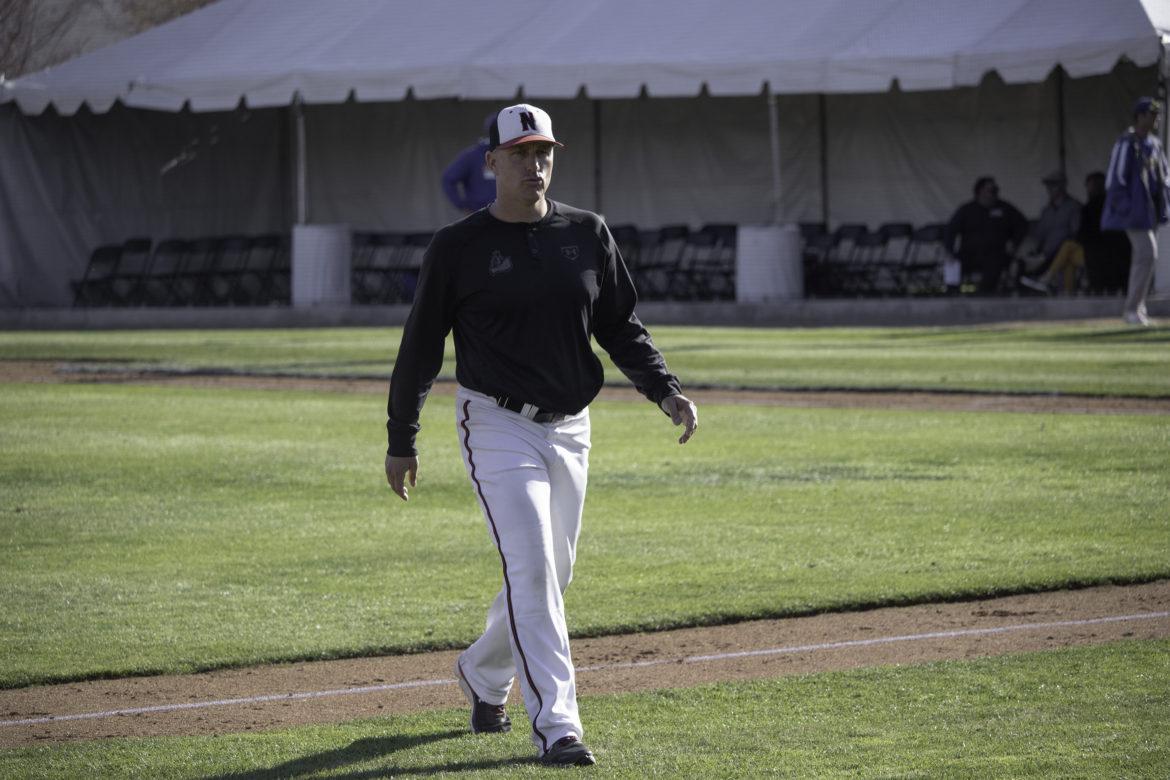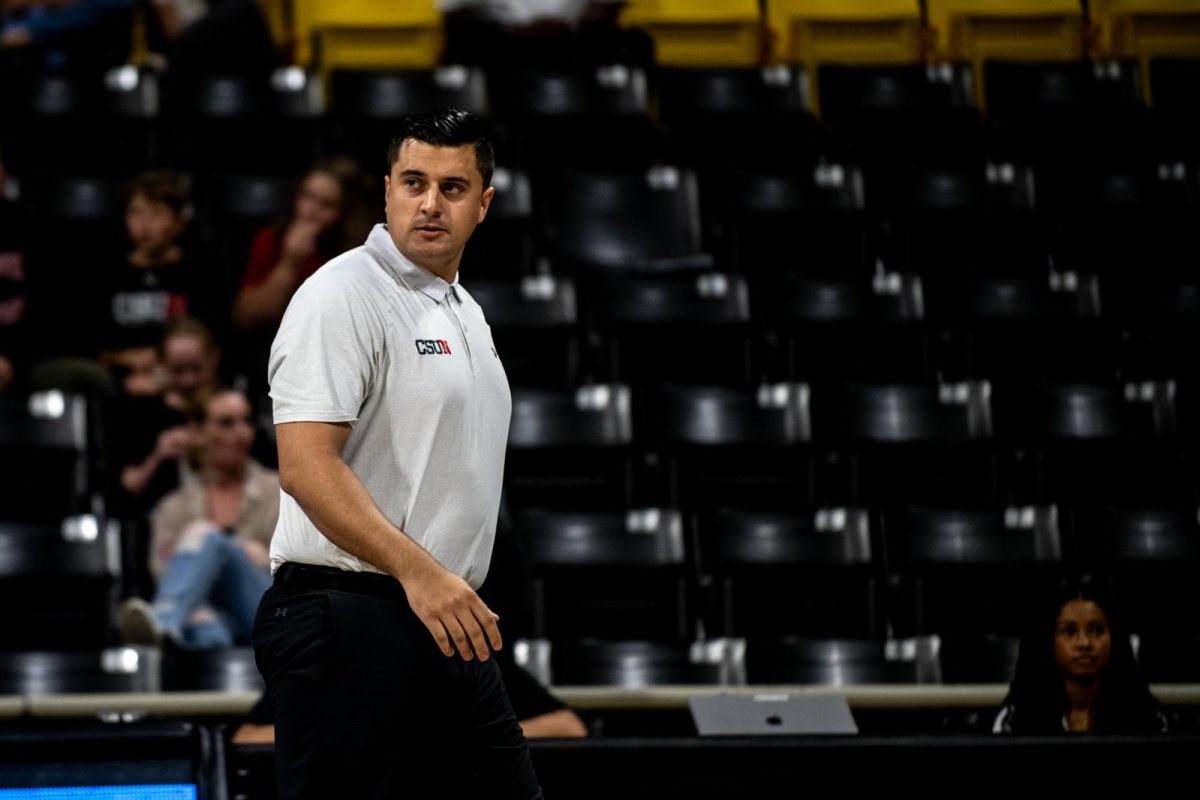Southern California has long been known as a hotbed for college baseball coaches from across the nation to come recruit for their schools.
With the sun shining and the temperature sitting above 70 degrees seemingly every day of the year, there isn’t a time when baseball isn’t being played somewhere, giving coaches a huge sample to choose from for their programs. Of course, that also means that all of the schools in the area, as well as other schools across the country, are competing against each other to grab the best recruits, selling them on the ideals and history of each program.
For head coach Greg Moore, this presents a problem as he tries to beat out schools like UCLA, USC and CSU Fullerton that have the history and pedigree that high school kids look for when they think about where they want to go. To combat this problem, Moore and the rest of his coaching staff have developed a unique system that enables them to recruit not necessarily the best players, but the right ones.
“The first thing that would jump out is, we recruit late,” Moore said. “We do not go out and recruit freshmen. We don’t recruit sophomores. We get to know juniors and we sign seniors. This gives us a chance to get to know them, them to know us. It also allows the late bloomers to evolve.”
That last part, giving players time to evolve rather than just going for the guys that are good now, is just one aspect of why Moore believes that his program is “doing things differently.”
Another key aspect, one that Moore is very proud of, is CSUN’s mission to recruit from the San Fernando Valley out, trying to stay as local as possible in building his roster each year.
“First, our goal is to serve the Valley … start within 27 miles of home plate, draw a circle on a map and begin there,” Moore said. “We’ve tried to do that more and more. (Associate head coach Jordon) Twohig has done a great job of getting to know the coaches in the area.”
According to Twohig, the team’s former recruiting coordinator, of the 33 players on the roster this season, 12 come from the Valley, six from Orange County and two from the Inland Empire, amounting to an impressive 54.5 percent having roots in the Southern California area.
That mission doesn’t preclude Moore or any of his other coaches from finding talent elsewhere, though, with Moore finding another haven for high school baseball players in Vauxhall Academy, a prep school in the town of Vauxhall, Alberta, Canada, located about 150 miles southeast of Calgary, where three of the players played in high school.
“(We recruit from) places that train their players well and have high expectations and that’s why Vauxhall Academy is a place where a few of our players have come from,” Moore said. “I got to know Les McTavish, the director of their program, eight years ago. We’ve stayed in touch and he is like-minded. He expects his players to hustle, he expects his players to be humble, and because of that, we have a great relationship.”
Having that relationship has yielded some great results both in past seasons and this one, as one of the Vauxhall alumni, sophomore pitcher Wesley Moore, is torching up the Big West in his first season as a Matador, ranking 10th in the Big West with a 2.85 ERA, eighth in strikeouts with 47 and sixth in innings pitched with 53.2.
Another alumni, freshman infielder Damiano Palmegiani, was part of the U-18 Canadian National Team that competed in the Dominican Summer League in 2018, as well as a 35th round draft pick in the MLB First-Year Player Draft by the Toronto Blue Jays.
Both of those players were part of elite recruiting classes, with both the 2017 and 2018 recruiting classes ranked in the top 40 in the nation according to Collegiate Baseball Newspaper, a testament to the coaching staff as a whole, but specifically Twohig and assistant coach Tony Asaro, who works in tandem with Twohig on the recruiting plan each year.
“(Asaro and Twohig) talk every day, often, usually multiple times,” Moore said. “And a lot of what they do is discuss to distill information. How was the conversation? How did he play last week? What does his coach say about him? With this being an organization and a baseball team, they’re looking at how somebody fits to what we’re doing. Those guys are in constant communication and always looking two months out to see where they’re going to be.”
Planning ahead is a major key for CSUN’s ability to recruit, as the players that Asaro and Twohig want to go scout have the same schedules as the Matadors do. However, this makes it difficult at times to see them play in person. So what they do is, they go out and see a recruit play on an off day or even before or after they play a game to not only see the player in action, but also to develop relationships with the coaches and parents of the recruits to make sure they are updated even when they can’t go out to see them.
“It’s a complete coordination with the entire coaching staff,” Twohig said about how they divide and conquer to recruit the way that they do. “What coach Asaro and myself, coach (Riley) Goulding, coach Moore, all of us do is we reach out to these (high school and junior college) coaches constantly, whether it’s a text, a phone call, an email. And we’re constantly getting schedules back or tips on kids to go see. So with that information, we have to take a look at not only when they’re playing, but when we’re playing, when we’re practicing, when they’re practicing, try to line up trips.”
Twohig gave the example of this past weekend when the Matadors had an away series in Long Beach, giving him and Asaro the opportunity to check out some of the high school and junior college games in the area without having to miss any of their own games. He also raved about the fact that, as residents of Southern California, already noted as a hotbed for baseball talent, he is able to recruit across the region while being able to come back home every night.
“You’re trying to find the best way (to recruit) without just chasing games and times,” said Towhig, “trying to find the right — it’s kind of like putting puzzle pieces together — trying to find the right spots to go see the people that we need.”
The last way they recruit, and possibly the most influential way according to Twohig, is through their own players. Whether it’s talking to the current Matadors about players that are a year or two younger at their alma maters or using them to relay information to recruits about how CSUN’s program works, the players themselves are an integral part of the recruiting system.
“We wear our players out, coach Asaro and I do,” said Twohig. “We’re always going to our own players. I think they’re our best recruiters because they’re the ones that are going to be real with those kids.”
Of course, finding the best talent is one thing, but sometimes those talented recruits, the ones that are talking to every major program in the country, aren’t the right fit for the kind of program that Moore wants to run.
“We always say ‘we’re looking for difference makers,’” Moore said. “A difference maker, that term can show up in a variety of forms. Sometimes it’s a set of intangibles a guy brings, sometimes it’s a skill on the baseball field. Everything has to be present, but there has to be something that makes that person a difference maker within, not just a baseball team, but an organization.”
Having an organization that works together and for each other is what makes this Matador team what it is. Every player on the roster contributes something and in every game, it’s a different guy doing something to put their team in a position to win. And it all starts with recruiting not just the right players, but the right people, even if they weren’t the ones other schools were looking at before they got here.
“I’m proud of the guys we have, they are very good players,” said Moore. “Not all of them were on the Perfect Game Top 100 list at a young age but every guy here can play at this level and every guy here, it surprises people by the way they perform because they weren’t on the tips of everybody’s tongues in 10th grade.”












